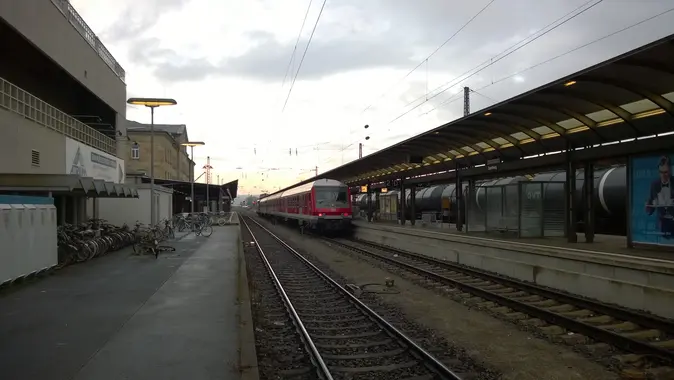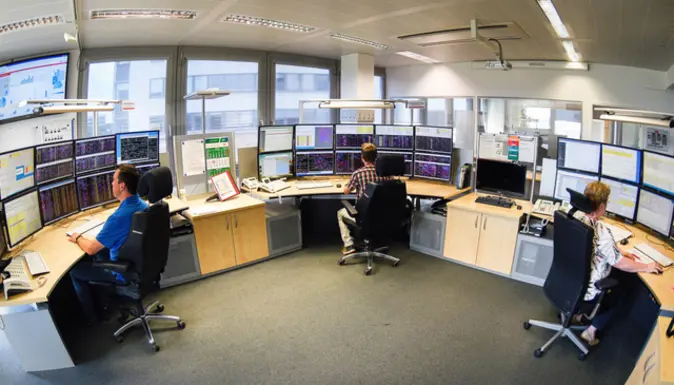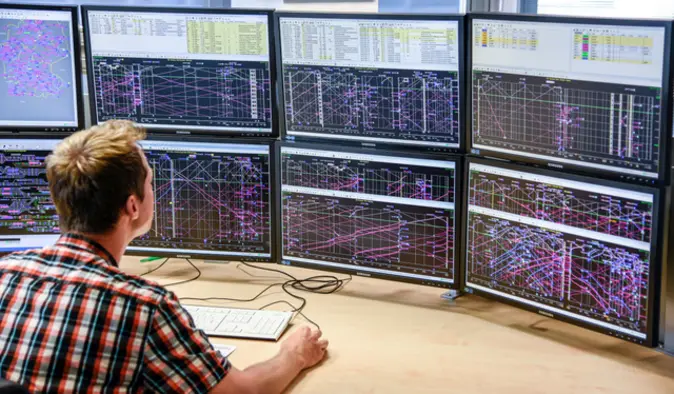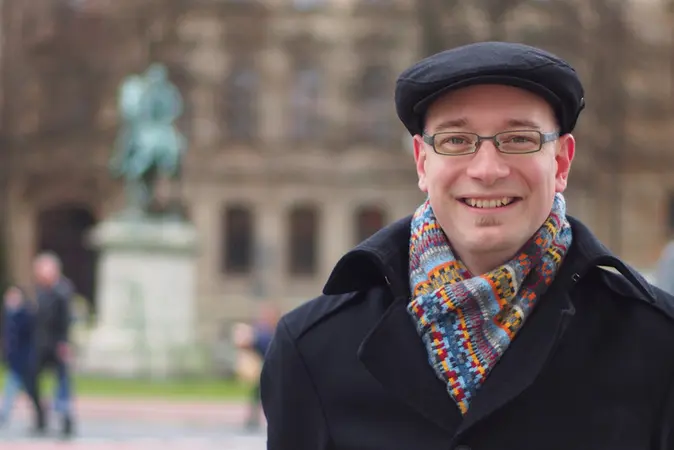How might Deutsche Bahn employees react to a disruption at Bamberg main station?
The threads are connected here: Deutsche Bahn employees sit back-to-back and coordinate the whole of German railway traffic from the railway network headquarters in Frankfurt.
In the railway network headquarters in Frankfurt, the employees observe up to ten screens at one time in order to track railway traffic in all of Germany.
Lasse Gerrits also publishes research in the field of complex networks in an academic journal that he oversees as editor in chief.
„German Railways is in urgent need of a better infrastructure“
We all know the situation: A train is running late, the carriage with our reserved seat is missing as well, and, to top it all, the temperature inside the train is either too cold or too warm. But you always reach your destination one way or another. Be it twenty minutes late, one hour late, or, relatively frequently, right on time. “The German rail network is highly complex. It’s little short of a miracle that it works at all”, says University of Bamberg political science professor Dr Lasse Gerrits. “It is a tremendous achievement that the Deutsche Bahn manages to be mostly on time.”
Currently, Gerrits is examining the disruption management of railway employees in Germany, Sweden, Belgium, Denmark, Austria and the Netherlands as part of a trans-European research project. He is especially focused on the social aspects of the topic: the relationships between the staff in the fields of vehicle operation, the signal towers and train scheduling. All these employees work together in a social network to maintain operation. How do they communicate? How do they solve problems? What are their personal relationships like? And what happens if a disruption affects the regular operating procedure?
The project is the first of its kind to systematically and transnationally analyse which solutions in disruption management work and under which conditions that is the case. With network analyses that illustrate who is in contact with whom and what the focus of the contact is, Gerrits is also analysing the ways in which respective countries’ procedures differ from one another and where there might be room for improvement in the future. The overall project will be conducted over five years and is being funded with a total of € 600,000 by the Dutch railway company ProRail and the Dutch research association NOW. For his research in Germany, the Deutsche Bahn has granted Gerrits access to the respective control rooms and to the employees working there.
Initial findings reveal how different the railway traffic structures in the various countries is
Even though Gerrits has only recently started with the German part of his research, he can already elaborate on some of the structural differences between German railway traffic and its counterparts in the neighbouring countries: The procedures in Germany are organised in a more hierarchical way than in the Netherlands or in Denmark, for instance. “In Denmark, the people dealing with an issue just call each other and fix it”, Gerrits says.
At this point, Gerrits cannot yet answer the question of whether the German bureaucratisation serves as a disadvantage. The opposite might also be true: “German railway traffic is highly complex. The network is huge.” What is more, it is also located in the centre of Europe, meaning that many trains pass through Germany, for instance on their way from the Netherlands to Poland. “All in all, trains belonging to over 400 railway companies are passing through Germany. This number is not matched in any other country.” More informal solutions, like for instance the ones practised in Norway, therefore might not be possible.
Investments in the rail network are necessary
Apart from the social aspects, Gerrits is also analysing the technology itself. He has therefore especially taken note of the Deutsche Bahn’s antiquated sites. “The Deutsche Bahn is in dire need of a better infrastructure”, says the political scientist. In the Netherlands, all switches can be operated from a central computer. In contrast to this, there are some switches used in Germany that still have to be set manually. This kind of anachronism makes railway traffic more complex and more difficult to handle. “Someone has to show up at these switches and crank them manually”, Gerrits says. The Deutsche Bahn simply lacks the funds for more up-to-date equipment. “This definitely demands the attention of policy makers. Investments in the railway network are desperately needed”, is Gerrits’ advice.
Networks are the big question of our time: Answers can be found in an academic journal from the University of Bamberg
“Today, we are connected on multiple levels”, Gerrits says. “Professionally, but also privately.” Modern means of communication like the telephone, email, and the internet can be used anytime, almost anywhere in the world. Accordingly, the networks are becoming more complex and more and more dependencies are being created that influence our lives. “How these networks function is therefore one of the big questions of our time”, Gerrits says. “The Deutsche Bahn’s disruption management offers some very concise examples.”
As editor in chief of the academic journal Complexity, Governance & Networks, the professor connects researchers and academics worldwide who deal with complex networks, and creates a platform for them to exchange ideas and research findings. But the journal also strives to serve as a bridge to the practical sphere and to grant executives in administration, politics and management insights into how networks operate. All papers are accessible as open access publications for researchers as well as for students. The journal is published by the University of Bamberg’s own publishing house, the University of Bamberg Press.
This news was translated by Andreas Böhler.



